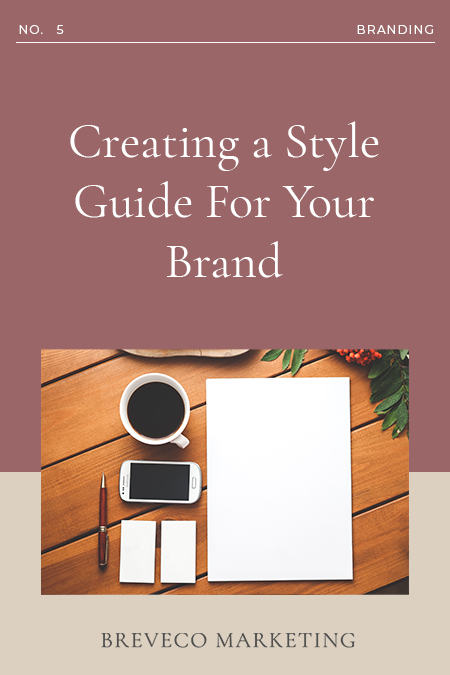Creating A Style Guide For Your Business Brand
Style guides set rules for visual and language-based content for your brand. These guides remain essential to articulating your brand well.

Overall a style guide will establish uniformity and help ensure that when you decide to outsource, companies are able to communicate a consistent brand message.
Visual Content
Visual content is what the public sees. Your logo, icons, and fonts make up your visual content. Using these items exclusively creates a harmonious look that keeps your brand recognizable.
The most well-known businesses have positive brand association with their visual content. For example, the Apple franchise has created an unmistakable look with the signature forbidden fruit.
Creating a recognizable design will help stand out among contenders, just like how the clean margins of Instagram’s emblematic camera logo allow individuals to identify the brand they love from a sea of other platforms.contribute on the front end.
Color Palette
Color and marketing have a long history. Many in depth studies dive in to how to choose colors for your specific business demand.
Each color has a registered RGB, CMYK and HEX code assigned it. These different codes are required for different uses—RGB color codes display well on the web while CMYK colors are used for print purposes.
Figure out the corresponding codes across for each color in your palette to ensure the colors display correctly no matter the medium.
Logo + Iconography
The Nike swoosh logo is a perfect example of consistency in logo design. While Nike uses a single image to represent all of its branding, this technique is not a hard and fast rule for logo design. It all depends on your business.
An alternative may be utilizing a primary logo and expounding on the look with different icons for specific target areas. Just be sure that the icons still connect with the main logo design.
For example, the Google Places icon is different from the brand logo, yet the style and color palette remain cohesive to the visual branding rules of Google as a whole. The Google Places icon successfully ingrates innovative design while maintaining the brand integrity.
Typography uses text in creative ways that contribute to design.
Font + Typography
Typography uses text in creative ways that contribute to design.
A classic example of typography is Coca-Cola. The red, scripted font is actually a trademarked style. Even if the words “Coca-Cola” are not written, the typography is identifiable.
Choose key fonts for your style guide. Have enough to be able to differentiate headlines from standard text, but limit yourself to two or three fonts so as not to confuse the public.
Visual style guides set requirements for everything associated with your brand. Find examples of style guides here.
Brand Language
Language refers to the messages and key words behind your brand. Focusing on the brand language in your style guide is just as important as the visual components. Don’t neglect this element of the style guide. Ultimately, this language plays a vital role in who you are as a business as it helps set the tone and personality for your brand.
Brand Mission
To effectively tailor the brand language, your brand mission must be identified. The brand mission does more than state what you do. It identifies how you want to influence and interact with your consumers. Brand mission statements typically appeal to emotion and evoke deeper meaning in order to develop a voice that engages and resonates well with audiences.
Key Characteristics
Identify three key characteristics of your business. Carefully choose your main identifiers. Let these descriptions be the words you want consumers to think of when they engage with your brand—from your written messages to your visual designs.
Allow these key characteristics to act as an anchor that will help you maintain consistency in the way you present your brand.
Brand Language Examples
The real magic of Disney is how it has developed a brand that connects with each person who comes into contact with the franchise.
Disney has gone through extreme measures to support the claim that it is the happiest place on earth. The Disney experience trickles down to every part of the consumer’s engagement experience.
Slogans are great tools for effective brand languaging. Gieco’s “15 minutes could save you 15%” message was so well-communicated that the company was able to set itself apart in the insurance field.
Visual branding distinguishes you from the crowd by helping consumers remember who you are. Brand language develops a connection that builds trust and inspires loyalty.
For smaller businesses, a style guide fills a huge void. While many companies outsource a variety of their brand projects, it’s important to keep a clear and consistent look and message when you receive the final product.
Pro-Tip: Specificity is king when it comes to making a style guide. You have to be specific and clear in your style guide so that all your content is uniform and looks like it all came from the same place, even if many different hands were involved.
The experts at BreveCo understand the importance of adhering to a style guide. We are ready to work with you and create brand collateral that will communicate a uniform style for your specific needs.

Fantastic web site. A lot of helpful information here. I’m sending it to several pals ans additionally sharing in delicious. And obviously, thanks on your effort!